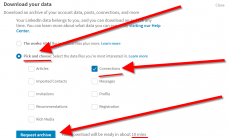Some of you veteran marketers know TV advertising very well. You might have spent years buying network television spots and, in recent years, you’ve made the transition to cable. You learned a lot about how TV commercials work on cable, how some commercials are broadcast over the entire cable network while others are overlaid by local cable systems. Well, don’t look now, but industry luminary Esther Dyson says we might be about to see the same thing play out on the Web.
Until now, there have been two basic types of display (banner) ads—those rendered by the Web site itself and those distributed by an advertising network, such as DoubleClick. Advertisers had their choice of going directly to the content provider or using an ad network.
Advertisers who work directly with a content provider (such as ESPN or CNN) negotiate a price for an ad to be displayed on that provider’s Web site. Typically, your ad would be shown as part of a rotation of several ads, but you’d always know which site would display it—perhaps even what page it would be on.
Advertisers who work with an ad network know a lot less about where their ad will appear. That ad might appear on any Web site that works with that ad network. The advertiser might request certain demographic profiles for the Web site, and will be shown reports describing how many impressions and clicks the ad received, but often not exactly where it was shown.
Despite the lack of information, the content Web site is largely in control, getting to choose whether their own ad or the network’s ad shows up in any particular spot on their Web page. That might be changing.
Esther Dyson had a very interesting article recently in the Wall Street Journal explaining how Internet Service Providers (ISPs) might be personalizing ads. She did not name any ISPs currently doing so, but she named several technology companies that can personalize ads by IP address based on individual user Web activity.
The question is, where do these ads go?
Are they presented at the top of the screen above the content site’s regular masthead, pushing some of the content below the fold? Or would it work like cable TV, where the ISP puts an ad on top of a content site’s existing ad, overlaying it with its own? Either way would strain relations between content sites and ISPs and add fuel to the net neutrality fire.
I’m not surprised to see advertisers wanting to personalize their ads more and more. This technique that uses Web surfers’ activity information, known as behavioral targeting, is a big reason that Google bought DoubleClick, and the other search engines have made similar acquisitions. But I frankly wasn’t expecting the ISPs to be at the forefront here. The ISPs have a stronger hand for personalizing than the ad networks because they don’t have as much need for cookies or registration to identify people. Some ISPs literally know where you live, as well as your name and credit card number. Others at least can use your IP address (even a dynamic one) to roll up your activity.
I suspect that advertisers will buy ads as easily from an ISP as from DoubleClick, but I wonder where those ads will be displayed. Keep an eye on this one.





